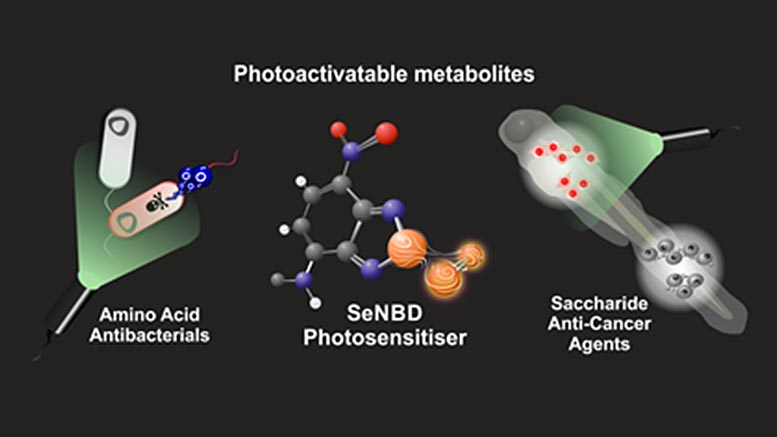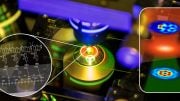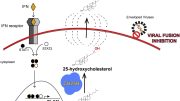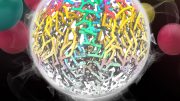
Scientists found that combining a small bacteria-killing molecule with a chemical food compound tricks bacteria into ingesting the drug, allowing it to penetrate the cell’s defenses more effectively. Credit: University of Edinburgh
A light-activated drug that can enter and kill bacterial and cancer cells without harming nearby healthy cells has been tested successfully.
Scientists found that combining the tiny bacteria-killing molecule with a chemical food compound can trick bacteria into ingesting the drug.
The molecule – called SeNBD – is smaller than existing light-sensitive treatments, which means it can pass through the cell’s defenses more easily.
Researchers say further tests are needed to show if the drug is a safe and quick method of treating early stage cancers and drug-resistant bacteria. This study was carried out in zebrafish and human cells.
Coupling drug with metabolite is key
Coupling the drug with a food compound is key to its success. For cells to survive, they must consume chemical components of food – known as metabolites – such as sugars and amino acids for energy.
Bacterial and cancer cells are greedy, tending to consume higher concentrations and different types of metabolites than healthy cells. Pairing SeNBD with a metabolite makes it ideal prey for harmful cells.
Until now, most light-activated drugs have been bigger than metabolites, which means bacteria and cancer cells do not recognize them as normal food.
Researchers at the University of Edinburgh, who have invented SeNBD, compare it to a Trojan horse and describe its effect as that of a metabolic warhead. Harmful cells ingested the linked drug without being alerted to its toxic nature.
With SeNBD, we can combine a light activated drug with the food that cancerous and bacterial cells normally eat. This means we can deliver our ‘Trojan horse’ directly through the front door of the cell rather than trying to find a way to batter through the cells defences.
Dr Sam BensonPost-doctoral researcher, at University of Edinburgh’s Centre for Inflammation
Activated by visible light
As well as being small enough to enter cells, SeNBD is also a type of drug called a photosensitizer, which means that it kills cells only after it is activated by visible light.
Switching on the drug with light means a surgeon could decide exactly where they want the drug to be active, avoiding the chances of attacking healthy tissue and preventing the kind of side effects caused by other drugs.
Lead researcher Professor Marc Vendrell, Chair of Translational Chemistry and Biomedical Imaging at the University of Edinburgh, said:
“This research represents an important advance in the design of new therapies that can be simply activated by light irradiation, which is generally very safe. SeNBD is one of the smallest photosensitizers ever made and its use as a ‘Trojan horse’ opens many new opportunities in interventional medicine for killing harmful cells without affecting surrounding healthy tissue.”
The findings of this research are published in Nature Communications journal.
Reference: “Photoactivatable metabolic warheads enable precise and safe ablation of target cells in vivo” by Sam Benson, Fabio de Moliner, Antonio Fernandez, Erkin Kuru, Nicholas L. Asiimwe, Jun-Seok Lee, Lloyd Hamilton, Dirk Sieger, Isabel R. Bravo, Abigail M. Elliot, Yi Feng and Marc Vendrell, 22 April 2021, Nature Communications.
DOI: 10.1038/s41467-021-22578-2









Be the first to comment on "Photoactivatable Metabolic Warheads: Light-Sensitive Drug Acts As Trojan Horse to Kill Cancer Cells"